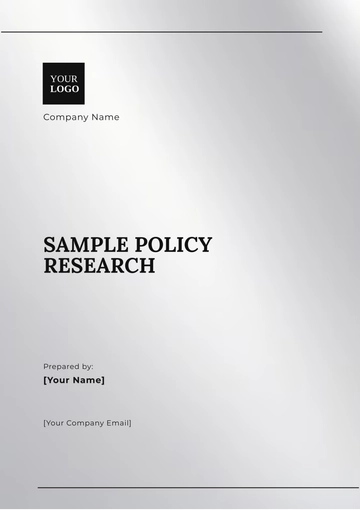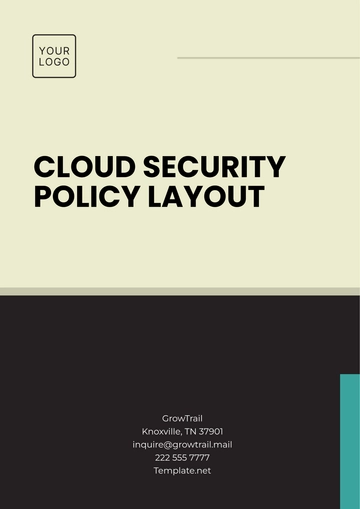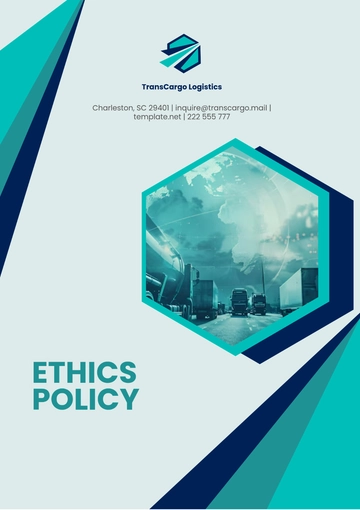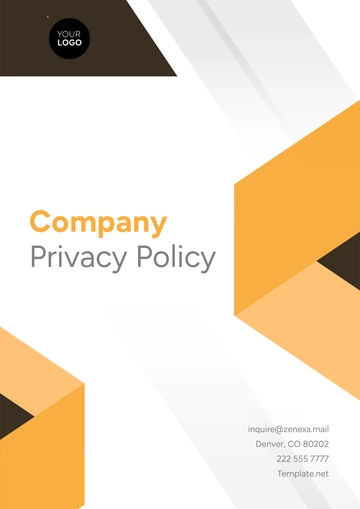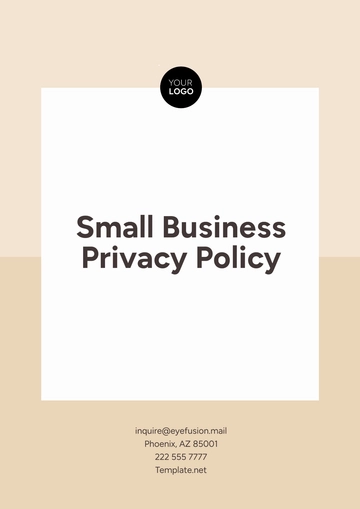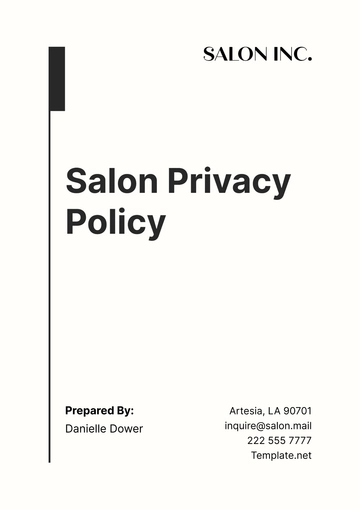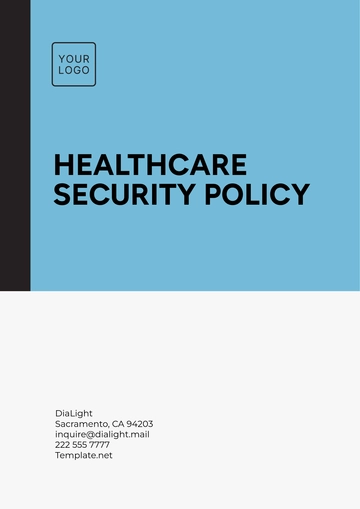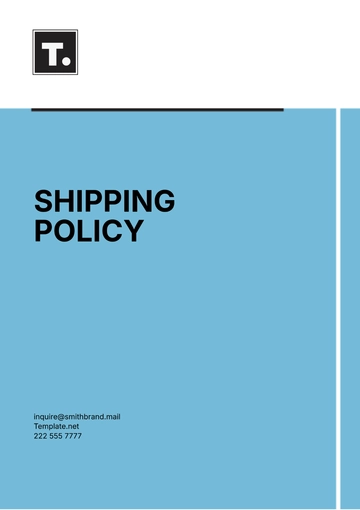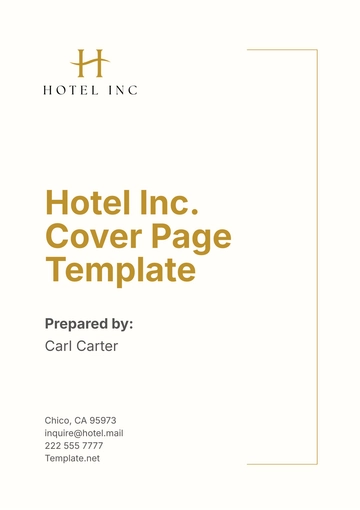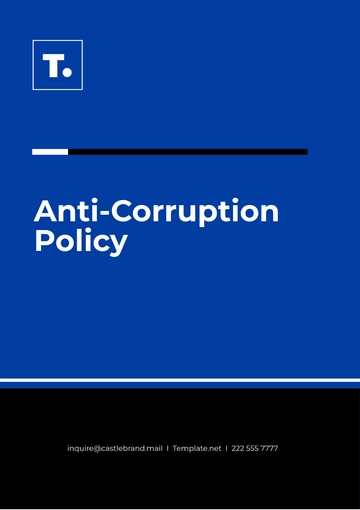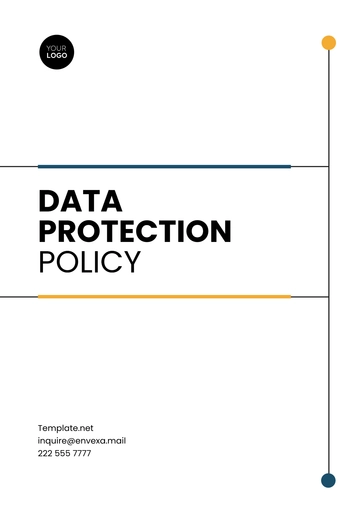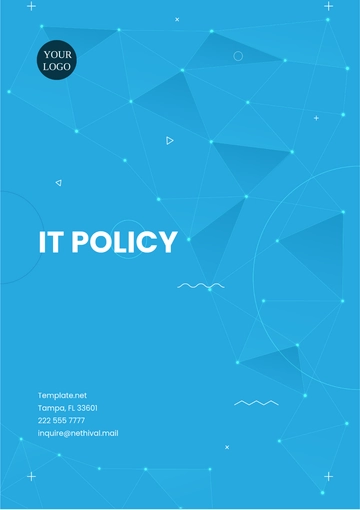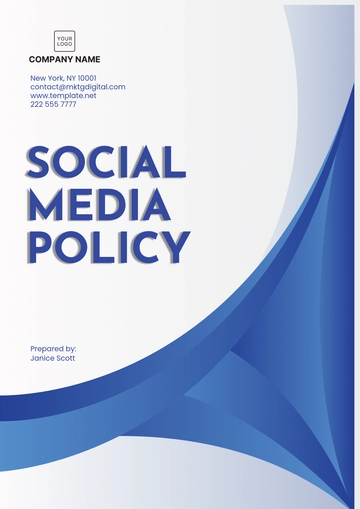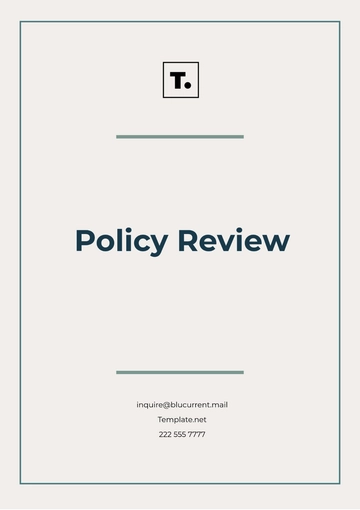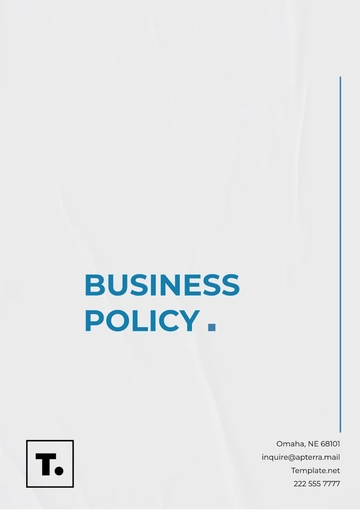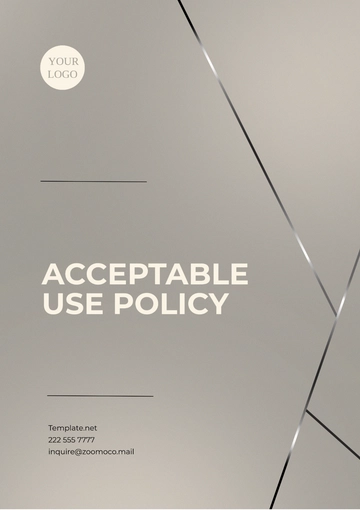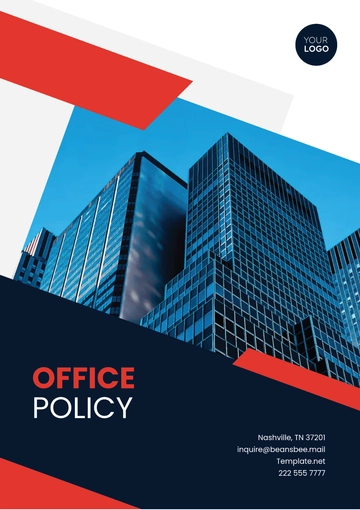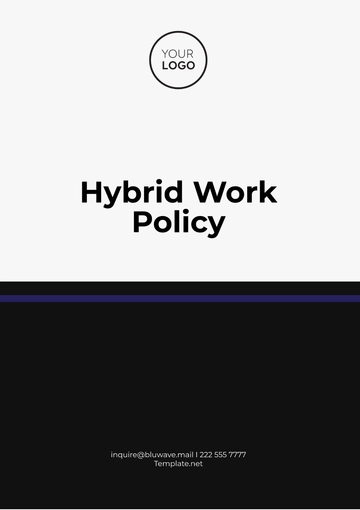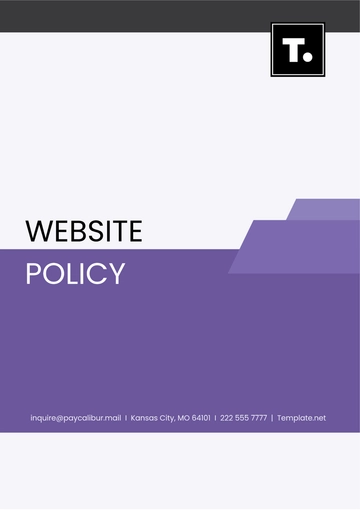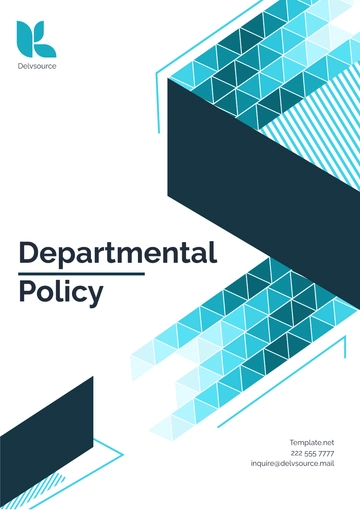Free Marketing Content Ethics & Policy Procedure
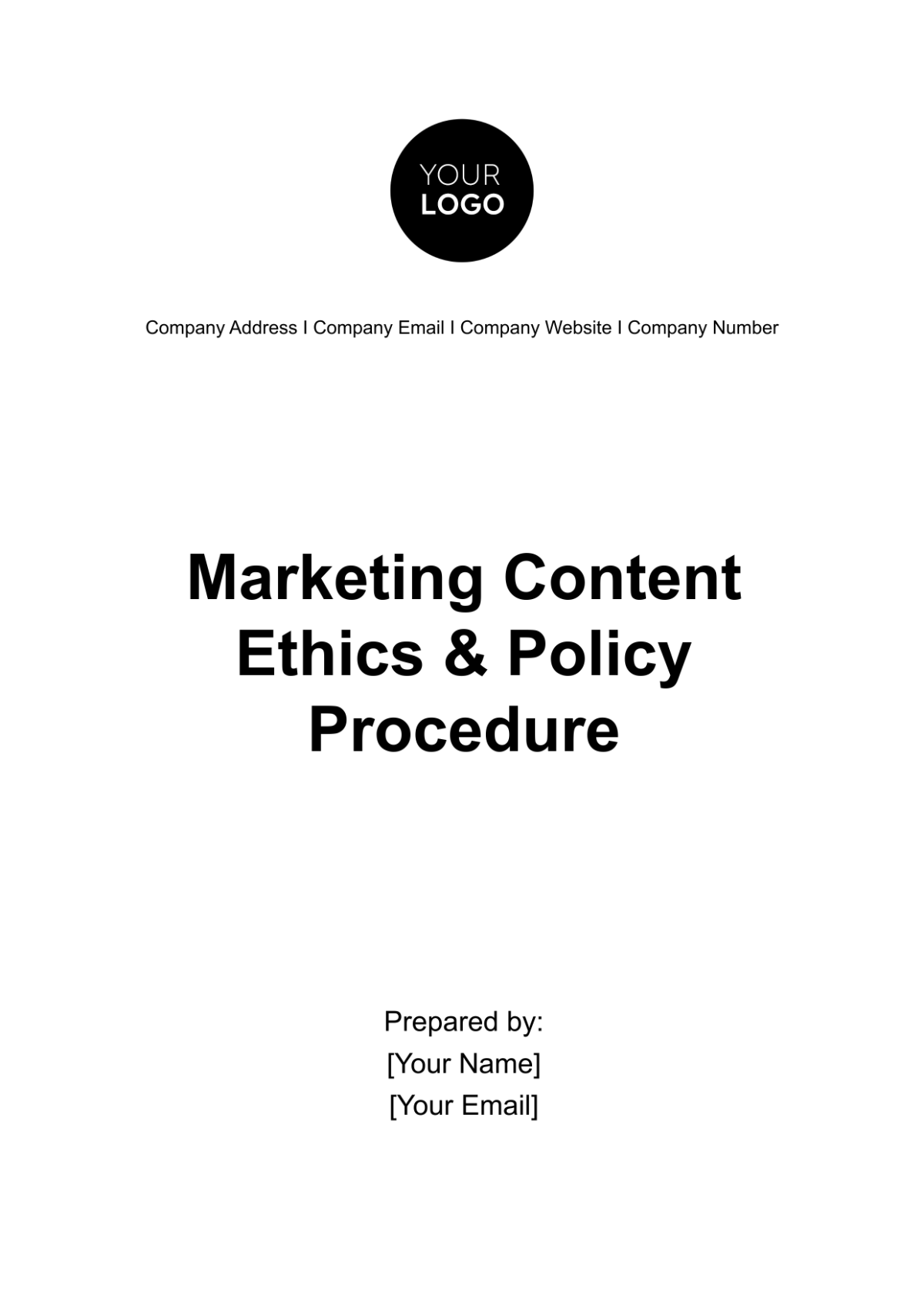
1. Introduction
The purpose of this comprehensive document is to delineate the Ethics & Policy Procedure for all marketing content generated and distributed by [Company Name]. Given the significant impact of content in today's digital age, maintaining high ethical standards is not just a legal necessity but also crucial for preserving the integrity and reputation of our organization. This manual is intended for all staff members, freelancers, and contractors involved in any aspect of content creation, curation, and distribution. It serves as an exhaustive guide to ensure that the material we produce and disseminate aligns flawlessly with the company's ethical guidelines, legal compliances, and quality standards. By adhering to the policies and procedures outlined herein, we aim to establish a framework that fosters accountability, consistency, and excellence in all our marketing initiatives.
2. Objectives
The objectives section of this document outlines the core goals we aim to achieve with our Marketing Content Ethics & Policy Procedure. These objectives serve as the foundation upon which all our content creation and distribution efforts are built. They act as guiding principles for the teams and individuals involved, ensuring alignment with [Company Name]'s broader business goals and ethical commitments.
A. To maintain the integrity and reputation of [Company Name]
In the competitive marketplace, the integrity and reputation of a company are invaluable assets. This policy aims to ensure that all marketing content upholds the highest standards of honesty and transparency. We strive to deliver messages that are accurate, clear, and beneficial to our stakeholders, thereby solidifying the trust and respect that [Company Name] commands in the industry.
B. To ensure ethical and legal compliance in all marketing endeavors
Compliance with ethical norms and legal statutes is non-negotiable for [Company Name]. Through this policy, we aim to create a robust mechanism that ensures all content generated and distributed by the organization abides by relevant laws and ethical standards. This not only includes honesty in advertising but also pertains to data protection, intellectual property rights, and non-discrimination.
C. To set a standard for consistent, quality content
Consistency is key in branding, and quality is paramount in all that we do. This policy serves as a quality assurance tool, providing detailed guidelines and procedures for creating marketing content that is not only consistent in style, voice, and format but also high in quality. By doing so, we aim to enhance customer engagement, loyalty, and overall satisfaction.
3. Ethical Guidelines
We delve into the key pillars that form the basis of our Marketing Content Ethics & Policy Procedure: Transparency, Honesty, and Sensitivity. These fundamental principles serve as the guiding force behind every piece of content that is created and distributed under the umbrella of [Company Name]. Each of the following sections outlines the considerations and guidelines associated with these principles.
A. Transparency
In today's data-driven world, transparency stands as a pillar of trust. All data, statistics, or facts used in any of our marketing content must be verifiable and correctly cited from reputable sources. Failure to do so not only erodes trust but can also have legal implications. This policy dictates that all data points must be cross-verified before publication, and the original sources must be credited appropriately, either within the content or in an accompanying note.
B. Honesty
Consumers are increasingly savvy and skeptical; they can easily spot deceit or exaggeration. Therefore, honesty is a core principle that [Company Name] insists upon in all its marketing messages. Misleading consumers through false claims, exaggerations, or misrepresentations is strictly against our ethics policy. Marketing content must provide an accurate and realistic portrayal of our products or services. Any claims made should be substantiated, and if conditions apply, these must be clearly stated so as not to mislead the consumer.
C. Sensitivity
In an increasingly diverse and global marketplace, sensitivity towards different genders, races, religions, and cultures is not just ethical but also good business practice. Content that alienates or offends any demographic is counterproductive and against the principles of [Company Name]. Therefore, our policy necessitates that all content must be inclusive and sensitive to the different groups it could potentially reach. This includes avoiding stereotypes, being mindful of language and cultural nuances, and ensuring that content is accessible to as broad an audience as possible.
4. Content Creation Policy
This document addresses the policy guidelines specific to the actual creation of content. At [Company Name], we believe that the process of content creation is as important as the final product itself. Ensuring that our content is constructed in an ethical, professional, and legally compliant manner is paramount to our mission. This section outlines the key areas that must be adhered to during content creation: Language & Tone, Visual Elements, and Sources & References.
A. Language & Tone
The way we communicate is reflective of [Company Name]'s brand identity, ethos, and values. Therefore, the language used in all marketing materials must be clear, professional, and respectful. Complex jargon that might alienate certain members of the audience should be avoided. Instead, the aim should be to communicate messages as straightforwardly as possible to ensure that the content is accessible and understandable to a wide range of consumers. Additionally, the tone must remain respectful and inclusive, avoiding any language that could be perceived as discriminatory, derogatory, or disrespectful.
B. Visual Elements
Visual elements like images, videos, or infographics significantly enhance the impact of our content. However, it's essential to ensure that these elements are used responsibly and ethically. All visual elements must have the proper licensing and permissions. Using copyrighted material without authorization is strictly against company policy and can lead to legal consequences. Staff responsible for content creation should ensure that they source images and other visual content from reputable sources and obtain all necessary licenses.
C. Sources & References
In an era of information overload, citing sources and references appropriately lends credibility to our content and shows respect for intellectual property. This is in line with our commitment to transparency and honesty. When presenting facts, statistics, or quoting someone else’s work, it's critical to provide accurate citations that enable readers to trace the original source. Not only does this validate the information being presented, but it also protects [Company Name] from potential allegations of plagiarism or misinformation. As such, a standardized citation format should be followed for all content pieces.
5. Approval Process
The purpose of this chapter is to outline the formal approval process that all marketing content must undergo before it is distributed or published. This procedure ensures that the content meets [Company Name]'s high standards of quality, ethics, and legal compliance. A sequential process has been put in place, involving various key individuals within the company who are responsible for different stages of content review and approval.
The following table elaborates on the steps, the personnel responsible, and the deadlines associated with each phase.
Steps | Responsible Person | Deadline |
Draft Creation | [Person 1] | [Date 1] |
Initial Review | [Person 2] | [Date 2] |
Final Approval | [Person 3] | [Date 3] |
A. Draft Creation
The initial draft of the content is to be created by [Person 1]. This individual is responsible for ensuring that the content aligns with the guidelines set forth in this policy document. Adherence to language and tone, appropriate sourcing, and proper use of visual elements should be confirmed at this stage. The deadline for this step is [Date 1].
B. Initial Review
Once the draft is created, it is sent for an initial review to [Person 2]. This individual is responsible for a comprehensive evaluation of the content, ensuring that it meets all ethical and quality standards set by [Company Name]. Any revisions or modifications that need to be made will be highlighted during this review. The deadline for completion of this stage is [Date 2].
C. Final Approval
The last step in the approval process is obtaining final authorization from [Person 3]. At this stage, the content is thoroughly reviewed one last time for any remaining inconsistencies, errors, or ethical concerns. Once [Person 3] grants approval, the content is cleared for distribution or publication. The deadline for this final step is [Date 3].
By adhering to this rigorous approval process, [Company Name] aims to maintain its reputation for producing high-quality, ethical, and legally compliant marketing content.
6. Distribution Channels
This chapter aims to provide a comprehensive overview of the various distribution channels through which [Company Name]'s marketing content will be disseminated. Each distribution channel has its own unique reach and impact, making it crucial to select the most appropriate platforms to achieve our marketing objectives. The following paragraphs detail the significance, pros, and cons of utilizing each distribution channel for sharing content.
A. Official Company Website
The company's official website serves as the primary platform for content distribution. It is the hub of all our marketing activities and is fully controlled by [Company Name], allowing for greater customization and tracking capabilities. Content published here benefits from high SEO visibility and directs traffic back to our core business operations. However, it also necessitates continuous maintenance and SEO optimization to ensure it captures the desired audience effectively.
B. Social Media Platforms
Social media platforms like Facebook, Twitter, and Instagram offer a more interactive way to reach a broader audience. These platforms allow us to engage with our audience in real-time, offer instant updates, and create a sense of community around our brand. They are particularly useful for sharing bite-sized pieces of content and for quick, timely promotions. However, effective social media marketing requires consistent posting and real-time engagement, which can be resource-intensive.
C. Email Newsletters
Email newsletters offer a direct line of communication to our audience. They are especially effective for sharing more in-depth content, periodic updates, and exclusive offers to a segmented list of recipients. The advantage of using email newsletters is the high level of personalization and tracking features, which enable us to analyze user engagement in great detail. However, it's essential to maintain a fine balance in the frequency and type of content to avoid potential unsubscribes.
D. Affiliate Websites
Affiliate websites serve as third-party platforms that promote our products or services in exchange for a commission on leads or sales. This channel allows us to tap into new audience segments by leveraging the credibility of the affiliate. While it's a cost-effective method that can drive both traffic and sales, it's crucial to ensure that the affiliate’s brand aligns with [Company Name] to maintain our reputation and integrity.
By understanding the pros and cons of each channel, [Company Name] aims to create a well-rounded distribution strategy that maximizes reach and engagement while maintaining brand integrity.
7. Copyright & Ownership
Understanding the ownership of content is crucial for both legal and ethical reasons, and serves as a safeguard against potential disputes or infringements.
All content generated as part of marketing campaigns, whether it be text, graphics, videos, or any other form of intellectual property, is to be considered the sole property of [Company Name], unless explicitly specified otherwise in legal agreements or contracts. This policy includes work produced by in-house teams, as well as contributions from freelancers, contractors, and agencies engaged in a professional relationship with [Company Name].
The ownership policy ensures that [Company Name] maintains full rights to modify, distribute, and utilize the content for any purpose, including commercial, across all platforms and formats. This provision is important not just for protecting the company's interests but also for maintaining a consistent brand image and message across multiple channels.
It is also important to note that any unauthorized use of this content by external parties without proper consent or licensing from [Company Name] is a violation of copyright laws and is subject to legal action. Therefore, all team members should be vigilant in monitoring the unauthorized use of [Company Name]'s content and report such incidents immediately.
In summary, this ownership policy is central to preserving the integrity, value, and legal standing of [Company Name]'s intellectual assets. It forms the backbone of our content marketing strategy, safeguarding our investment in content creation and distribution.
8. Non-Compliance Measures
This section lays out the course of action that will be taken in cases where there is a failure to comply with the Ethics & Policy Procedures outlined in this document. Adherence to these policies is not optional; it is a critical part of maintaining [Company Name]'s integrity, legal standing, and public reputation.
Failure to follow the guidelines set forth, such as misrepresenting facts, failing to cite sources correctly, or violating copyright laws, could lead to a range of disciplinary actions depending on the severity of the infraction. The repercussions are not limited to a verbal or written warning; they could extend to more serious consequences like suspension, legal action, and even termination of employment.
For example, minor offenses such as neglecting to cite a source may result in an initial warning and educational retraining on the importance of source citation. On the other hand, more severe offenses like knowingly plagiarizing content could result in immediate termination and possible legal repercussions.
It's also worth mentioning that [Company Name] will keep a record of all non-compliance incidents to review during performance evaluations. Continued failure to adhere to these guidelines may also impact promotional opportunities within the company.
In summary, the adherence to these policies is of paramount importance. [Company Name] views any breach as a serious issue that not only puts the individual at risk but also jeopardizes the entire organization. Therefore, stringent non-compliance measures have been put in place to ensure that all employees and contractors abide by these essential guidelines.
9. Review & Revision
This Ethics & Policy Procedure document is not static but a living guide that needs to adapt to changes in legal regulations, industry standards, and [Company Name]'s own evolving business practices. As such, it will be reviewed on an annual basis by a designated committee or person responsible for maintaining its relevance and effectiveness. This annual review will include a thorough assessment of all sections to ensure they are up-to-date with current laws and continue to uphold the company's ethical standards.
In addition to the scheduled annual review, the document may be subject to interim reviews in response to significant changes in the marketing landscape, legal environment, or any internal corporate changes that necessitate a revisiting of our policy guidelines. These interim reviews will be conducted as needed, and any changes will be communicated across the organization to ensure consistent compliance. By adhering to a rigorous review process, [Company Name] aims to maintain the highest standards of ethical conduct and legal compliance in all its marketing initiatives.
10. Appendices
Appendix A: Content Creation Checklist
Task | Responsible Person | Deadline | Status |
Topic Identification | [Person 1] | [Date 1] | ☐ Done ☐ Pending |
Research & Verification | [Person 2] | [Date 2] | ☐ Done ☐ Pending |
Draft Writing | [Person 3] | [Date 3] | ☐ Done ☐ Pending |
Visual Element Incorporation | [Person 4] | [Date 4] | ☐ Done ☐ Pending |
Initial Review | [Person 5] | [Date 5] | ☐ Done ☐ Pending |
Final Review & Approval | [Person 6] | [Date 6] | ☐ Done ☐ Pending |
Appendix B: Legal Requirements & Documentation
Requirement | Description | Responsible Person | Required Document |
Copyright Clearance | Ensure all used copyrighted material has permission or falls under fair use. | [Legal Team] | Copyright Clearance Certificate |
Data Privacy Compliance | Ensure that all data, especially customer data, is used in compliance with data protection laws. | [Legal Team] | Data Protection Certificate |
Licensing for Visuals | Ensure all visuals have the proper licensing or are created in-house. | [Design Team] | Licensing Documents |
Appendix C: Sample Forms for Approvals
Content Approval Form
Section | Description | Approver's Initials |
Content Topic | Brief description of the content topic. | |
Visual Elements | Description or list of visuals to be included. | |
Sources & Citations | List of sources and citations used in the content. | |
Final Draft | Approval for the final draft of the content. |
Distribution Approval Form
Section | Description | Approver's Initials |
Channels | List of channels where the content will be distributed. | |
Timing | Scheduled time for distribution. | |
Metrics & KPIs | Metrics and KPIs that will be monitored post-distribution. |
These appendices serve as practical tools to facilitate the implementation of the Ethics & Policy Procedure for marketing content creation and distribution within [Company Name].
_____________________________________________________________________________________
For any queries or clarifications related to this document, please contact [Contact Details].
Document Approved By:
______________________
[Approving Authority]
Date: [Date]
[Company Name]
- 100% Customizable, free editor
- Access 1 Million+ Templates, photo’s & graphics
- Download or share as a template
- Click and replace photos, graphics, text, backgrounds
- Resize, crop, AI write & more
- Access advanced editor
Discover the Marketing Content Ethics & Policy Procedure Template at Template.net! This editable and customizable resource offers a structured approach to uphold ethical standards. Tailor content effortlessly using our Ai Editor Tool. Ensure compliance and integrity in your marketing strategies with this essential template. Elevate your policies today!
You may also like
- HR Policy
- Restaurant Policy
- Company Policy
- Accounting Policies and Procedures
- Website Policy
- Privacy Policy
- Safety Policy
- School Policy
- IT and Software Policy
- Law Firm Policy
- Construction Policy
- Interior Design Policy
- Travel Agency Policy
- Education Academic Policy
- Security Policy
- Real Estate Policy
- Expense Policy
- Software Policy
